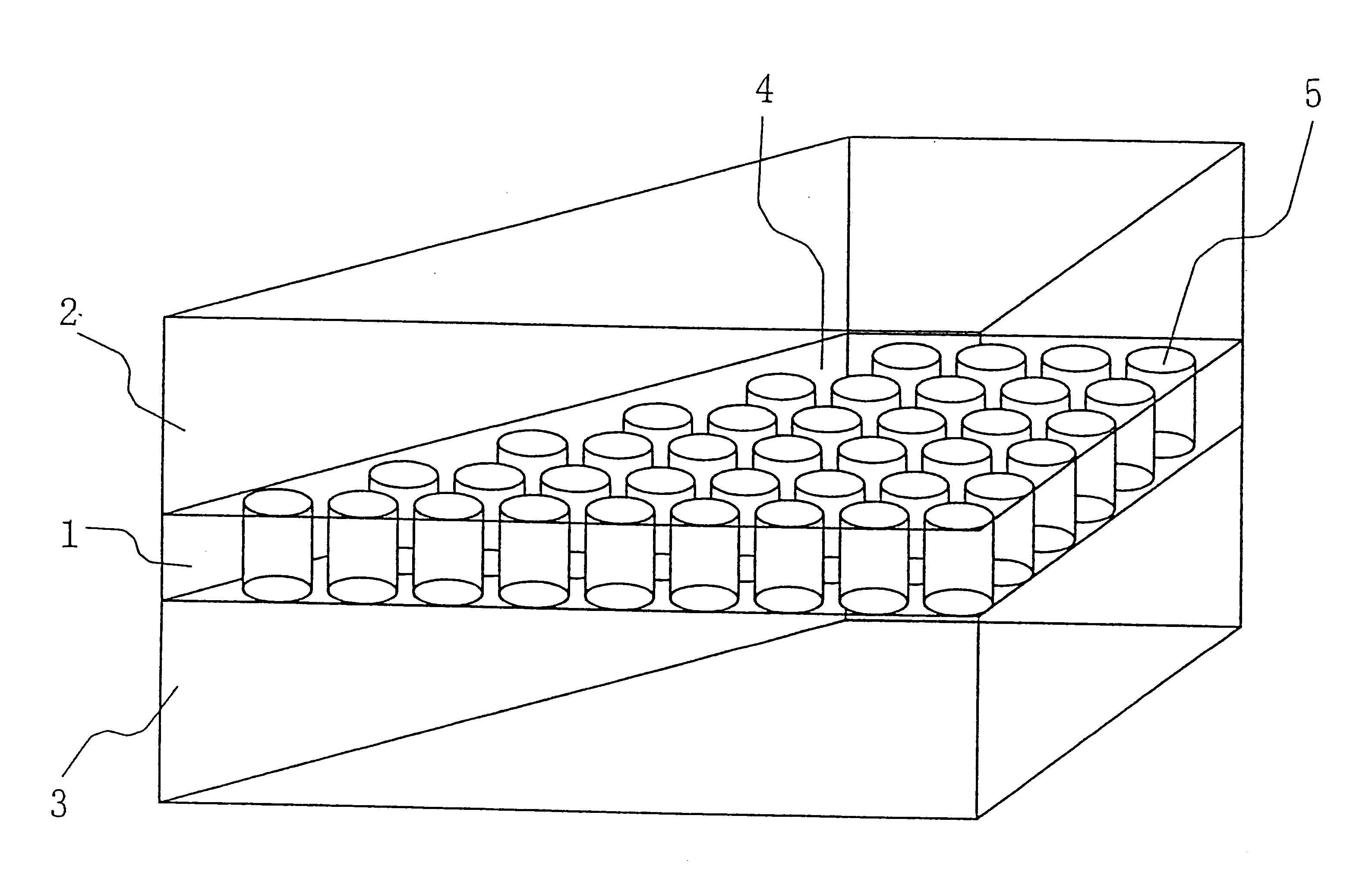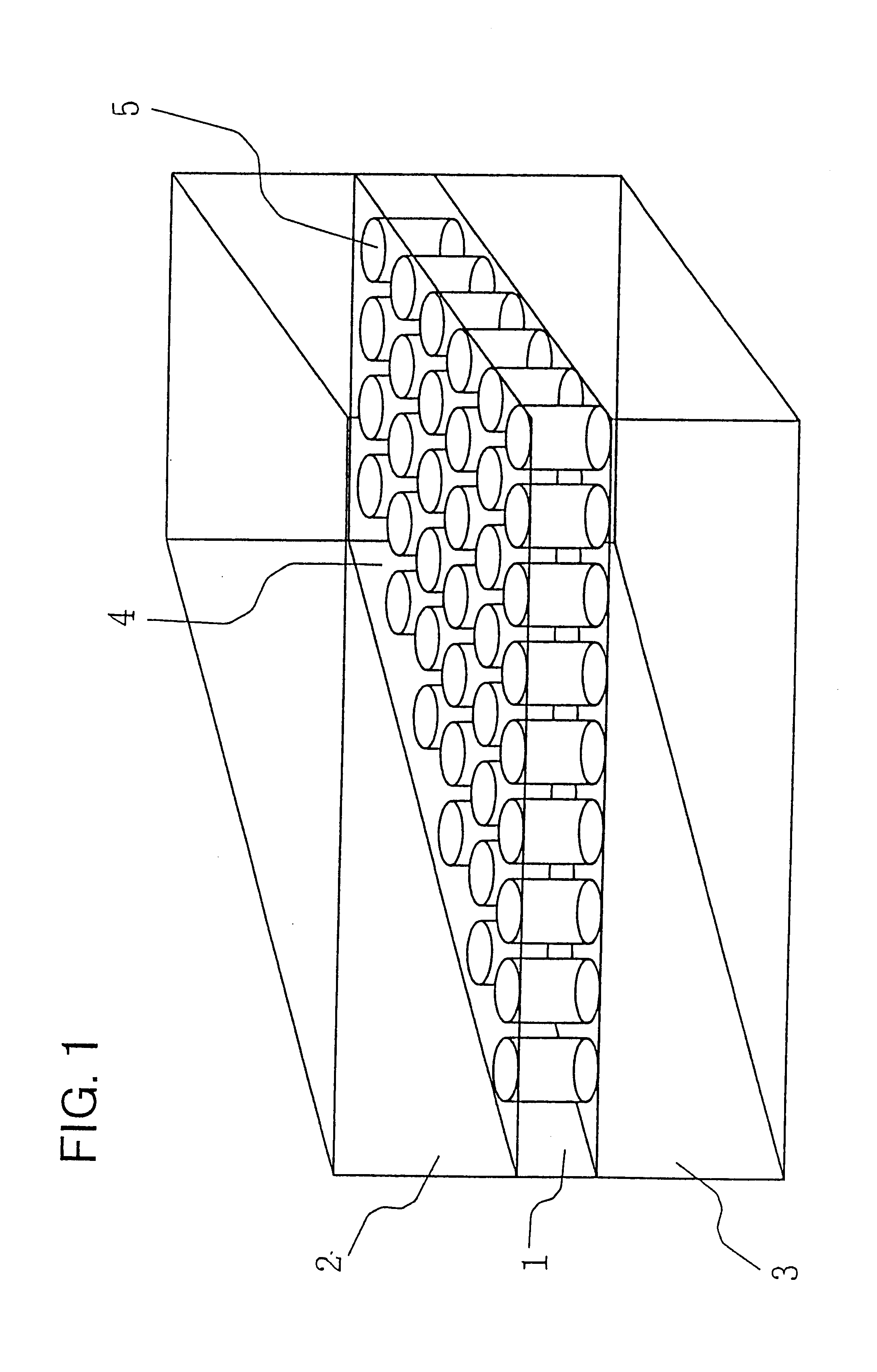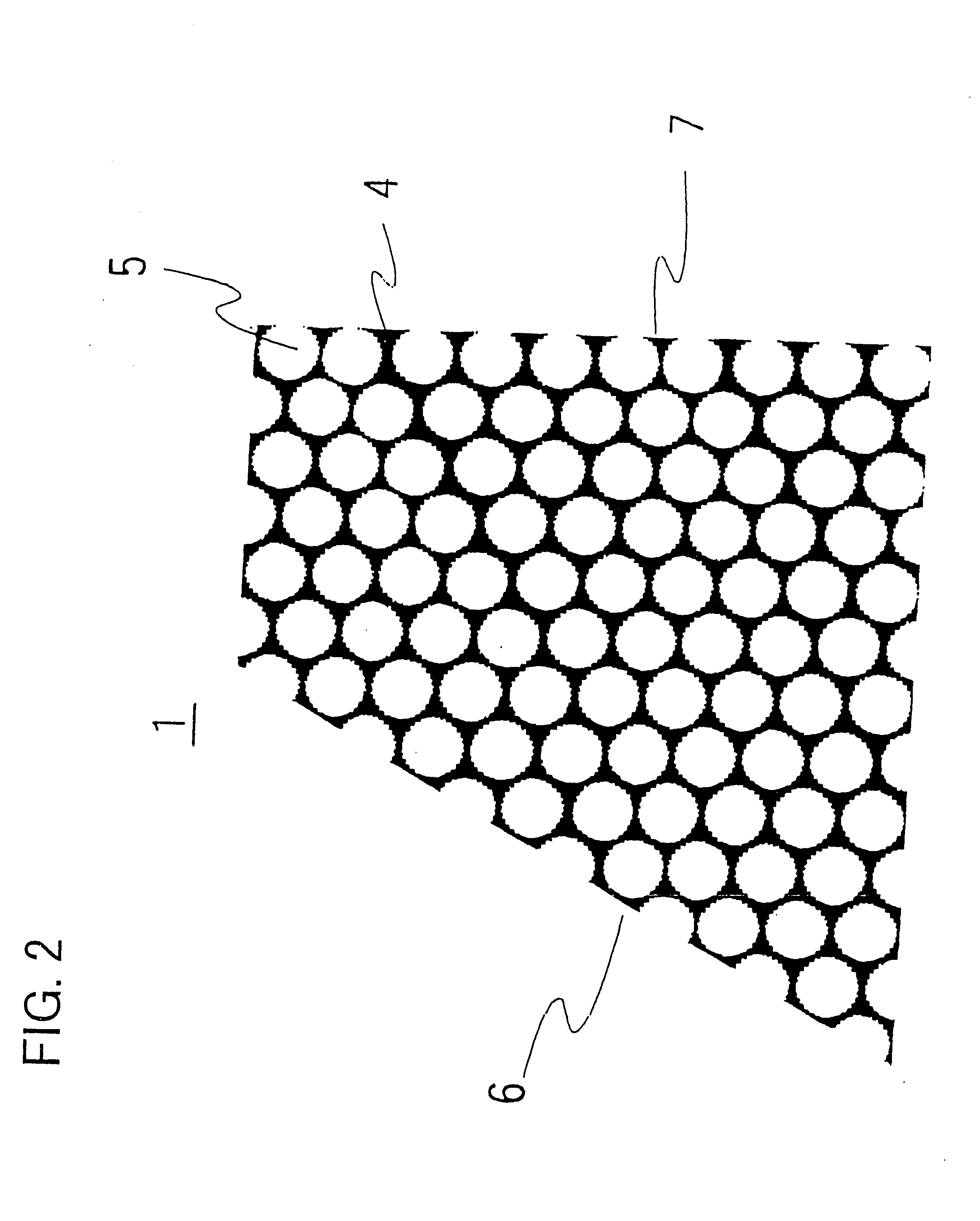Wavelength dividing circuit
a technology of dividing circuit and waveguide path, applied in the direction of optical waveguide light guide, nanotechnology, instruments, etc., can solve the problems of increasing device size, reducing crosstalk, and placing limitations on the bending radius of each waveguide path, so as to improve device characteristics or performance, the effect of high integration
- Summary
- Abstract
- Description
- Claims
- Application Information
AI Technical Summary
Benefits of technology
Problems solved by technology
Method used
Image
Examples
examples
Referring to the drawings, preferred examples for carrying out the present invention are explained. FIG. 3, showing an example of the present invention, shows a substrate as a sectional view taken in a plane parallel to the substrate surface facing the clad. Meanwhile, the overall structure of the wavelength dividing circuit embodying the present invention is the same as that shown in FIG. 1.
Referring to FIG. 3, a background medium 4 and atomic is mediums 5 in the substrate 1 are silicon (Si) and air, respectively. That is, the substrate 1 is a Si substrate having through-holes.
The substrate 1 has a thickness of 1.9 .mu.m, with the atomic mediums 5 each being round columnar in shape. The openings are each 0.77 .mu.m in diameter, with an aspect ratio being 2.6. With this aspect ratio, the through-holes representing the atomic mediums 5 can be produced also by an etching process. The arraying pitch of the atomic mediums 5 is 0.83 .mu.m.
On both sides of the substrate 1, SiO.sub.2 plate...
PUM
 Login to View More
Login to View More Abstract
Description
Claims
Application Information
 Login to View More
Login to View More - R&D
- Intellectual Property
- Life Sciences
- Materials
- Tech Scout
- Unparalleled Data Quality
- Higher Quality Content
- 60% Fewer Hallucinations
Browse by: Latest US Patents, China's latest patents, Technical Efficacy Thesaurus, Application Domain, Technology Topic, Popular Technical Reports.
© 2025 PatSnap. All rights reserved.Legal|Privacy policy|Modern Slavery Act Transparency Statement|Sitemap|About US| Contact US: help@patsnap.com



